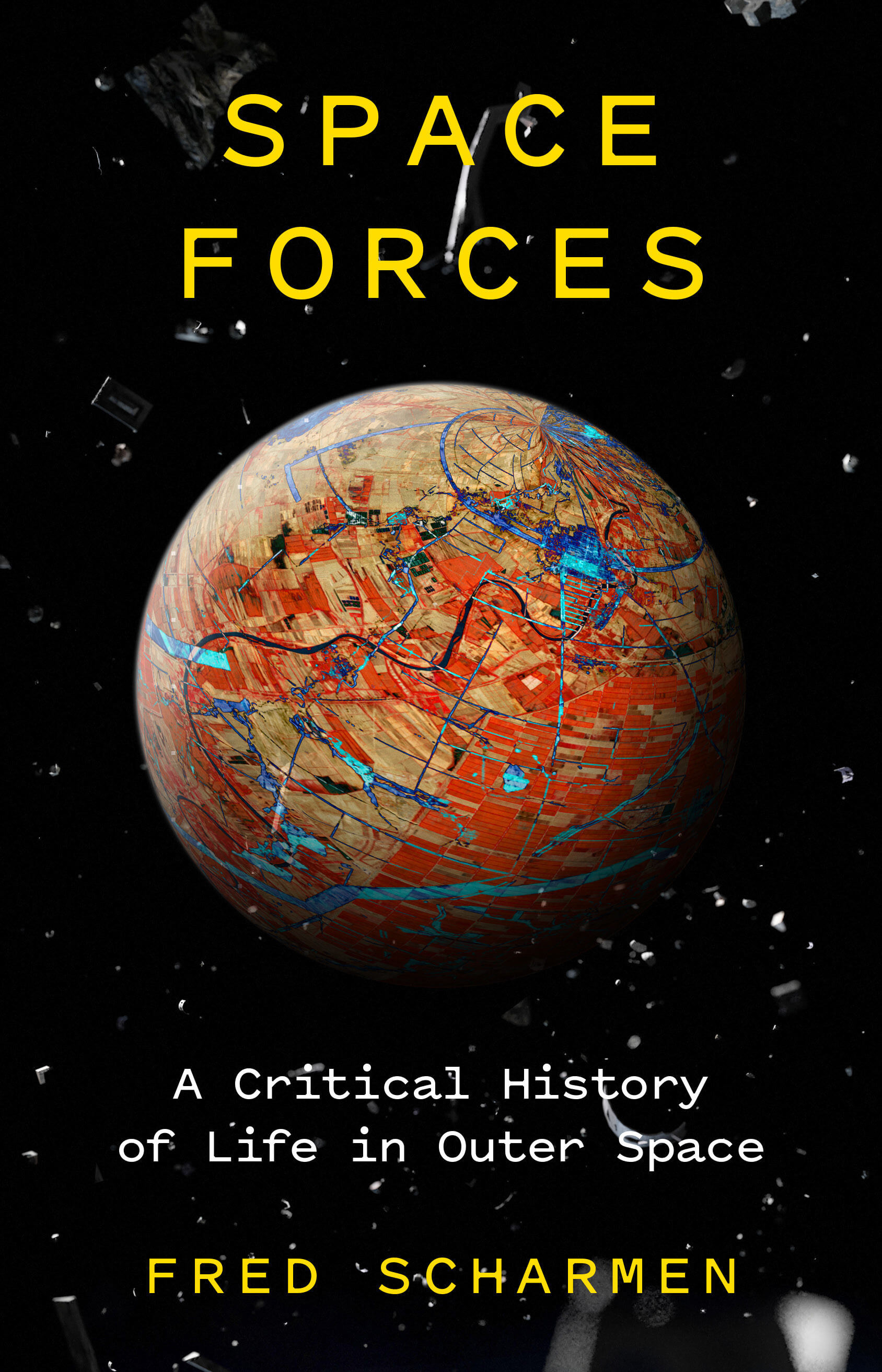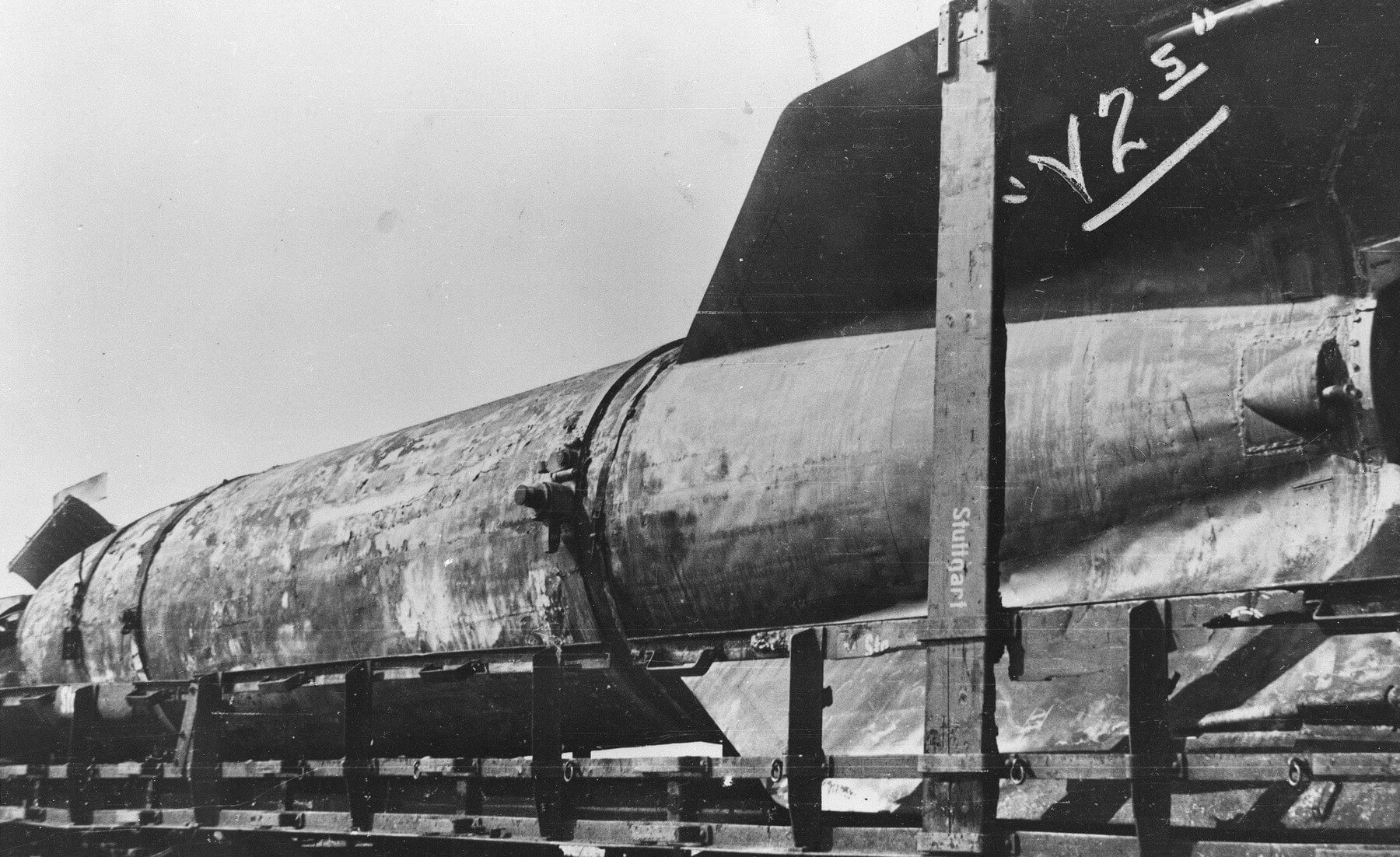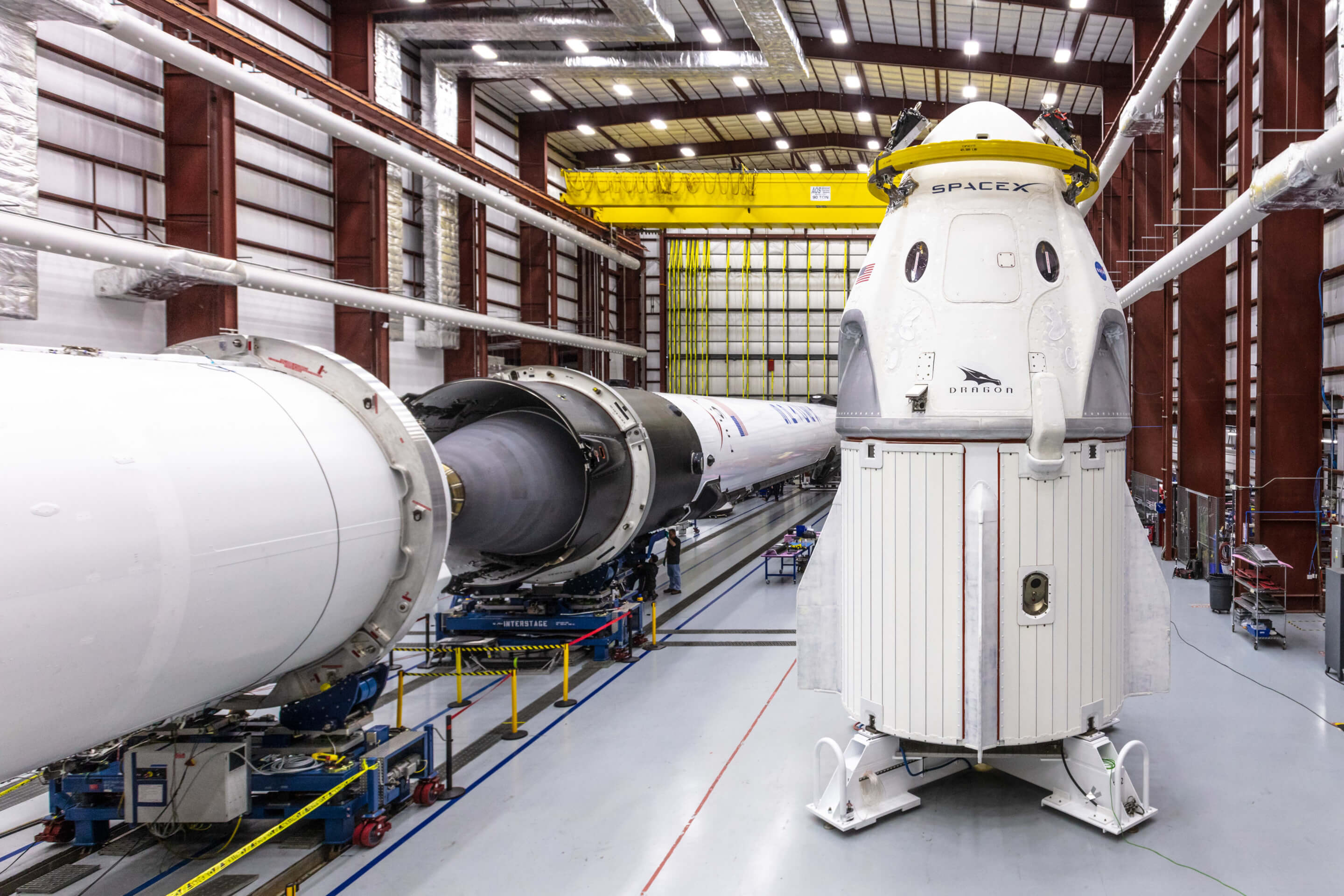Space Forces: A Critical History of Life in Outer Space
By Fred Scharmen
Verso Books, 2021
MSRP $27
As the world spins deeper into the third year of a global pandemic with no sign of abating, a new space race is forming over our heads. Entry is open to all, and the tickets are literal.
Just pay Richard Branson’s Virgin Galactic $250,000 and you, like the more than 600 customers the company has already lined up, can touch the edge of space. If you wanted to up the ante and paid $28 million to Jeff Bezos’s Blue Origin, you could have dined with and sat next to the Amazon founder himself when the first manned flight of the company’s New Shepard rocket launched on July 20, 2021. And if you’re so wealthy you just want to show off, you can pay $55 million for a ticket to the International Space Station courtesy of Elon Musk’s SpaceX, whose Falcon 9 rocket successfully deployed the first private trip to orbit in September.

To these would-be space cowboys, NASA had its chance and failed; only “great men” can drag the planet up and onward. The only problem is the public isn’t biting. As Vox pointed out, a majority of Americans polled by Pew Research are disillusioned with private space tourism and would rather see the extravagant amounts of money being thrown around by billionaires used to solve terrestrial problems. The sentiment isn’t new: Public support for the Apollo missions was divided throughout the 1960s, when rampant income and racial inequality presented much more pressing targets for federal funding.
For their part, Bezos, Branson, and Musk see themselves as charting new paths for the human species, though they differ on the details. They are the self-appointed helmsmen pointing the rest of us into an impossibly bright future where profit charts only go up and to the right. Why resist?
Smug as they are, today’s billionaires are only picking up where mystics, rocket scientists, and socialists left off. As Fred Scharmen documents in Space Forces: A Critical History of Life in Outer Space, many have sought salvation among the stars. The book catalogs these 19th, 20th, and 21st-century visionaries, drawing a line from Nikolai Fedorov, the 19th-century Russian originator of the Cosmism movement, to Bezos, a proponent of interplanetary expansion to save humanity. Not directly, of course. By touching on the development of contrasting views of how practical spaceflight was developed across seven distinct time periods, Scharmen lays the threads of how we got here out in perfect clarity—history, like music, layers sample, remixes, and references. He returns to the well first visited in his 2019 book Space Settlements, but rather than discuss the logistical challenges of building habitats in space and inventing a ground plane with no frame of reference, the topic at hand is the dueling visions of the future we now seem locked into
Fedorov believed that if death was the ultimate evil to avoid, the highest good would be to solve it, with the end goal of resurrecting everyone who had ever died; the only way to sustain this exponential growth was unending expansion by whatever means necessary. Failure to do so would (Should space-faring humans encounter another sentient species, it would be better to stamp them out at the first available opportunity.) Federov died in 1903, but his ideas resonated with utopian revolutionaries such as Alexander Bogdanov, whose 1908 novel Red Star depicts a socialist Mars where the inhabitants are freed from societal divisions by a lack of plate tectonics and labor is not compelled but willingly offered. But after exhausting the resources of their home planet, and an unsuccessful expedition to Venus, the Martians eye Earth as a potential substitute. All that stands in the way of their cosmic destiny is human society, which, being less evolved and mired in strife, can be eliminated without a second thought—to do any less would doom them.

“The solar system can easily support a trillion humans,” Bezos has repeatedly touted as the end goal of Blue Origin. “If we had a trillion humans, we would have a thousand Einsteins and a thousand Mozarts and unlimited, for all practical purposes, resources and solar power.”
By his own admission, Bezos modeled his dreams on the work of Princeton physicist Gerard O’Neill, whose 1975 NASA Summer Study program conceived of enormous toroidal or spherical spacecraft capable of sustaining life. These spinning megastructures, analyzed in great detail in Space Settlements, were to feature rolling pastures, lakes, and picturesque hill towns; a slice of Alpine Austria churning through the vacuum of space and all of the colonial-era imagery that comes with it. Blue Origin even developed its own version of the O’Neill cylinder, one populated with pastiches of Earthbound landmarks. His counterpart, Musk, wants to colonize Mars as a hedge to what he sees as an inevitable catastrophe, whether it be an asteroid or plague, without considerations of staving off these ills in the first place.

But Space Forces does offer avatars of hope. The “xenophilic” books of novelist Ursula Le Guin, whose Hainish Cycle sees multiple humanities spread across the galaxy who explore solely for the enjoyment of new experiences, are placed alongside dealers of doom. Wernher von Braun, the Nazi who headed up the American space program after the latter defeated the former, is a curious mixture of the two.
Von Braun looms large in Scharmen’s study for his relentless advocacy of manned spaceflight and Martian colonization and is the closest thing to a main character the book has. The aerospace engineer oversaw the creation of the V-2 ballistic missile as a terror weapon at Hitler’s direct order; the rockets were assembled by prisoners in the underground Mittelbau-Dora concentration camp, where 20,000 would ultimately die as slaves to fuel Germany’s war economy. Resettled in America with a team as part of Operation Paperclip, von Braun quickly took to his adoptive homeland, publishing educational leaflets and science fiction stories that teased a near-future where middle-class Americans would live and work among the stars. He even worked with Walt Disney (himself a Leni Riefenstahl fan and tacit supporter of Nazi policies) on a series of films popularizing human space flight.

It was von Braun’s ability to code switch, to say the right things to the right people at the right time, that kept him in the public spotlight for so long. On the one hand, he was space’s most effective salesman, relentless in his love for the subject. On the other, he lobbied the U.S. government to build an orbital overwatch station capable of deploying a nuclear payload anywhere in the world, putting mutually assured destruction overhead. “Peace through security” was always a core tenet of von Braun’s ambitions, and his extended placement in Space Forces underlines a very real dichotomy at the heart of every epoch. Do we want to expand skyward for the sake of exploration, or as an expansion of empire? Even if the rockets carrying mankind toward Mars have peaceful intentions, can we ignore that they were built for bloodshed and by literal slave labor?
In the book’s introduction, Scharmen argues that we should understand moving off-world as colonization even if no one is being displaced. After all, somewhere in the chain of resource extraction, manufacturing, assemblage, and testing, someone is being immiserated (or as early science fiction writers admitted, enslaved). For Elon Musk or Jeff Bezos’s utopias in the sky to be realized, people must be exploited. If Musk has his way, the first waves of travelers may be pressed into service as Martian guinea pigs to ensure the safety of the rich. And therein lies the rub, that funneling people into the furnace of progress is the only way forward, because it’s how we’ve always done things. Someone will always need to mine the asteroids and maintain the “autonomous” robots.
Space Forces is often not prescriptive, but at the book’s end, Scharmen reflects on the creation of the titular Space Force by former president Trump in 2019. He correctly surmises that sending the U.S. Armed Services into orbit will only induce greater militarization back on Earth, potentially ending in the extinction of the species. If the promise of space exploration is one of wholly new ways of seeing, designing, and interacting with the universe, why does it look like it always has back on Earth? Why are we carrying forward the same modes of thinking that so easily excuse human sacrifice? Why must a utopia for some be a dystopia for everyone else? Space Forces pulls back the sheen of space to reveal the dangers lurking within.











